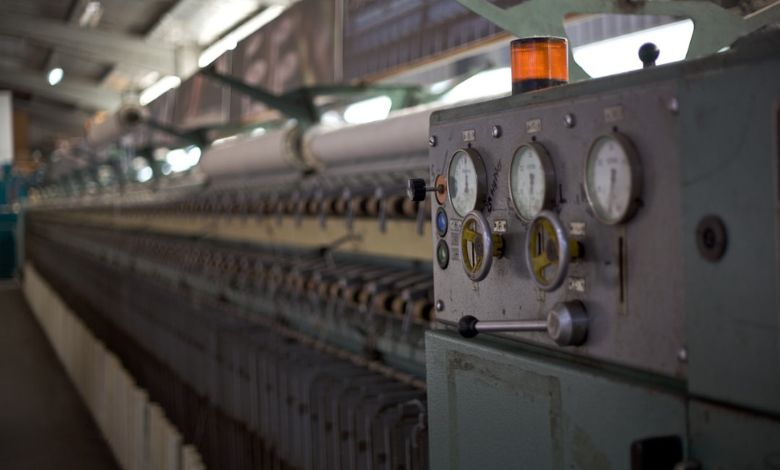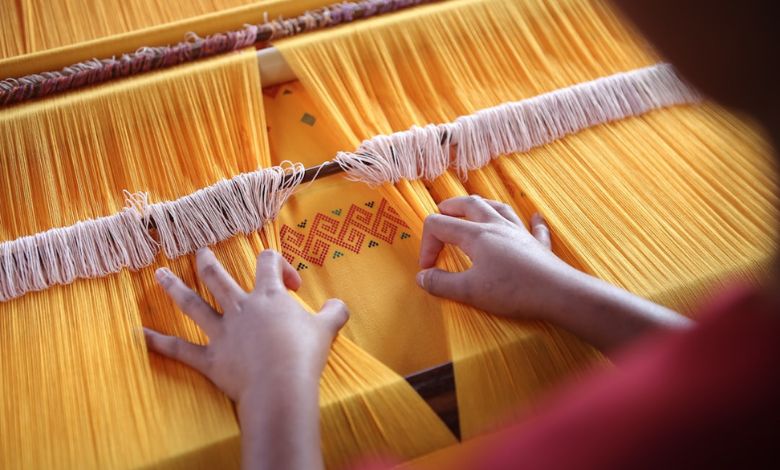Learn how did the invention of the weaving loom impact Mesopotamia, transforming society with innovation, teamwork, and progress.
When we think of life-changing inventions, we usually imagine things like rockets, smartphones, or the internet. But what about the weaving loom? It might not seem like much, but in ancient Mesopotamia, it completely changed society, and its effects are still with us today.
A few years ago, I visited an exhibit on ancient civilizations and saw a reconstructed Mesopotamian loom. The guide explained how important it was, and suddenly, it all clicked. It wasn’t just about weaving fabric; it was about innovation, teamwork, and progress.
In a way, it was like an early social enterprise, bringing people together to create something bigger than themselves and driving real societal change. It’s incredible how such a simple tool could leave such a powerful legacy. That’s a story worth sharing.
Article Breakdown
Economic Revolution through Textiles

The Birth of an Industry
Imagine being in ancient Mesopotamia around 4000 BCE, with cities like Ur and Babylon buzzing with activity. One thing really stood out back then: textiles. The invention of the weaving loom made it so much easier to turn sheep’s wool into fabric, which became a hot commodity for trade.
This invention transformed the economy. Before looms, making textiles took forever. With the loom, fabric could be made faster, and Mesopotamia started exporting it all over, from the Indus Valley to Egypt. Trade routes weren’t just about goods, they brought new ideas and culture into Mesopotamia’s lively cities.
A Driver of Wealth
Textiles in Mesopotamia were more than just items people used, they were as valuable as money. High-quality fabrics made on looms were a sign of wealth and power. Temples were a big deal back then and managed the production and trade of textiles on a large scale. The money from this trade funded amazing buildings, religious events, and even early government systems.
If you want to compare it to something today, textiles were like the smartphones of ancient times, super desirable, widely traded, and essential for economic growth.
Cultural Significance and Social Organization
The Role of Women
Let’s talk about the weavers themselves. In ancient Mesopotamia, weaving was predominantly women’s work. Many women worked in temple workshops, producing textiles that were used in religious ceremonies, traded for goods, or distributed as wages. The loom gave women a vital role in the economy, although their contributions were often undervalued in historical records.
I remember visiting a weaving workshop in a small village and watching a woman deftly maneuver a handloom. It was mesmerizing. In that moment, I could see the connection between her work and the women of Mesopotamia, tirelessly crafting the fabrics that shaped their society.
Cultural Expression
Beyond economics, textiles held immense cultural value. They were more than just clothing; they were art. Patterns and designs woven into fabrics told stories, represented social status, and carried religious significance. Temples adorned their priests in elaborately woven garments to signify their connection to the divine.
I once tried weaving a simple pattern on a loom during a workshop. It was far from perfect, but the act of creating something tangible gave me a newfound appreciation for the artistry of ancient weavers. Imagine their skill, crafting intricate designs that could endure centuries.
Technological Advancements
Innovation in Loom Design
The weaving loom evolved over time, beginning as a vertical loom and later transforming into a horizontal ground loom. These advancements improved efficiency and comfort for the weaver. By standardizing the weaving process, Mesopotamians could produce textiles at a scale large enough to support urbanization and trade.
A Catalyst for Creativity
The loom’s innovation didn’t stop at efficiency. It encouraged creativity. Patterns became more complex, and techniques advanced. These early looms laid the groundwork for the sophisticated weaving methods we see in later civilizations, from the intricate silks of China to the tapestries of Europe.
- Modern Parallel: Think of the weaving loom as the precursor to automation in the textile industry. Just as machines transformed factories during the Industrial Revolution, the loom revolutionized ancient production methods.
Impact on Urban Growth and Trade
Urbanization through Industry
With the rise of textile production, Mesopotamian cities grew into thriving hubs of commerce and industry. Specialized labor became a defining feature of these urban centers. Temples employed hundreds of workers to manage the production and trade of textiles, creating a ripple effect that influenced other industries.
Global Connections
The textiles produced in Mesopotamia weren’t just local treasures; they were global commodities. They reached distant lands, connecting Mesopotamia to a vast trade network. This exchange of goods also facilitated the exchange of ideas, technologies, and cultural practices, enriching Mesopotamian society.
- Example: Imagine wearing a scarf today that’s handmade in India but designed in Italy. That interconnectedness mirrors what Mesopotamia achieved through its textile trade.
Record-Keeping and Innovation
To manage this booming industry, Mesopotamians developed advanced record-keeping techniques. The invention of cuneiform, one of the earliest forms of writing, was partly driven by the need to track goods, including textiles. This connection between the loom and writing exemplifies how one innovation can spark another.
Key Lessons
- The weaving loom was more than just a tool in Mesopotamia, it was a game-changer.
- It boosted the economy, became a way for people to express their culture, and played a big role in technological and social progress.
- Its influence is everywhere, from ancient trade routes to the intricate designs found in clothing.
- Next time you see a piece of fabric, take a moment to reflect.
- Think about the people who made it, the stories it holds, and the connections to the past.
- Just like the loom shaped history, the things we create today could impact the future in ways we can’t even imagine yet.
Additional Resources:
- Textile Extensification, Alienation, and Social Stratification in Ancient Mesopotamia: This article looks at how textile production shaped society and social classes in ancient Mesopotamia.
- Sumerian and Akkadian Industries: Crafting Textiles: A detailed look at the textile industry in southern Mesopotamia during the third millennium BC.
- Functions and Uses of Textiles in the Ancient Near East: Learn about the many ways textiles were used in ancient Mesopotamia.
- A Study of the Textile Industry at Ancient Kellis: This paper investigates the textile industry at Kellis, drawing on artefacts, documents, and scientific evidence.



